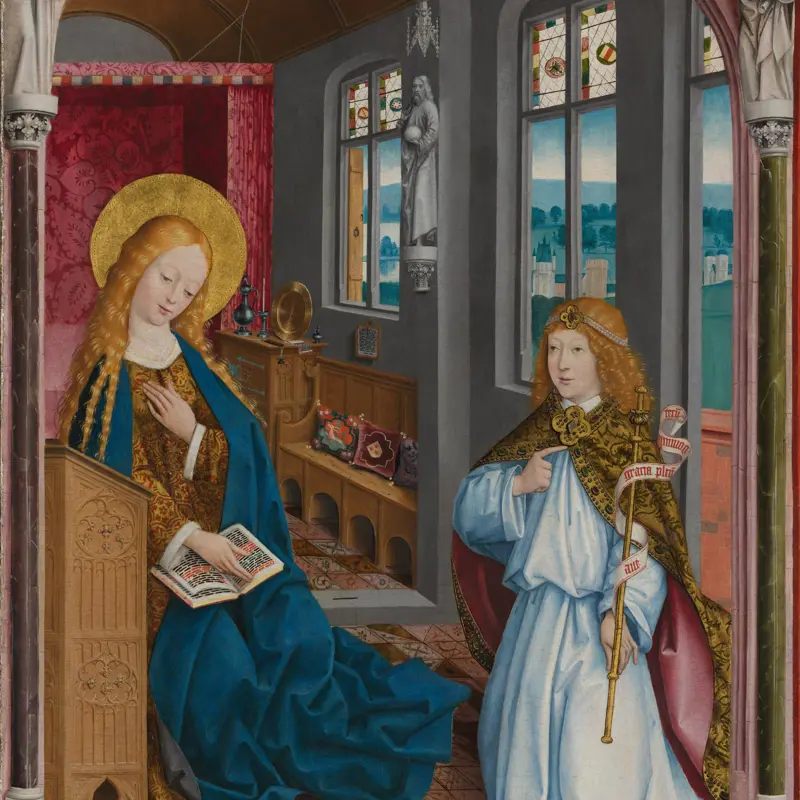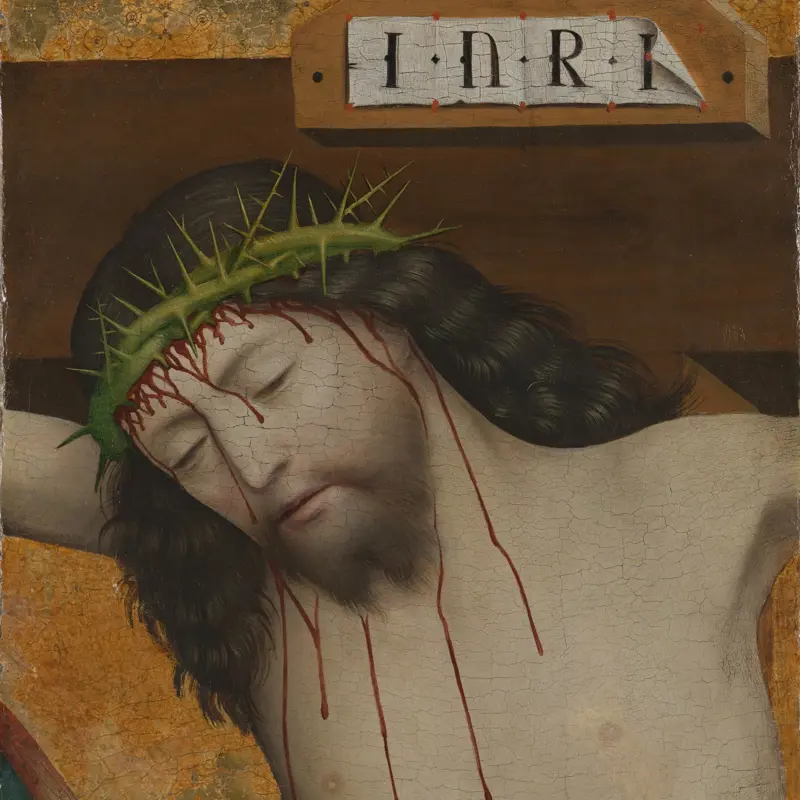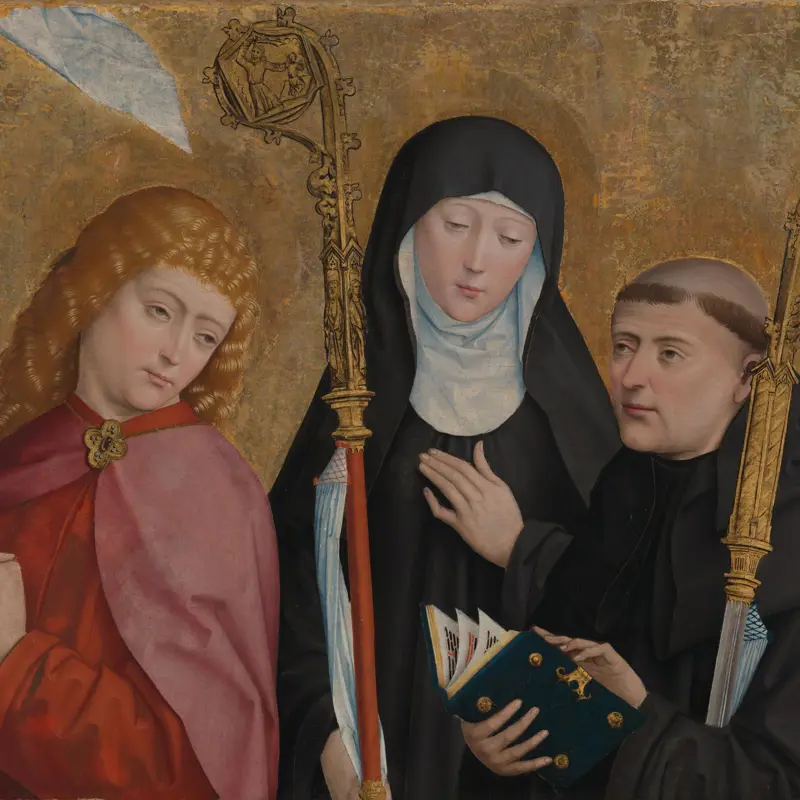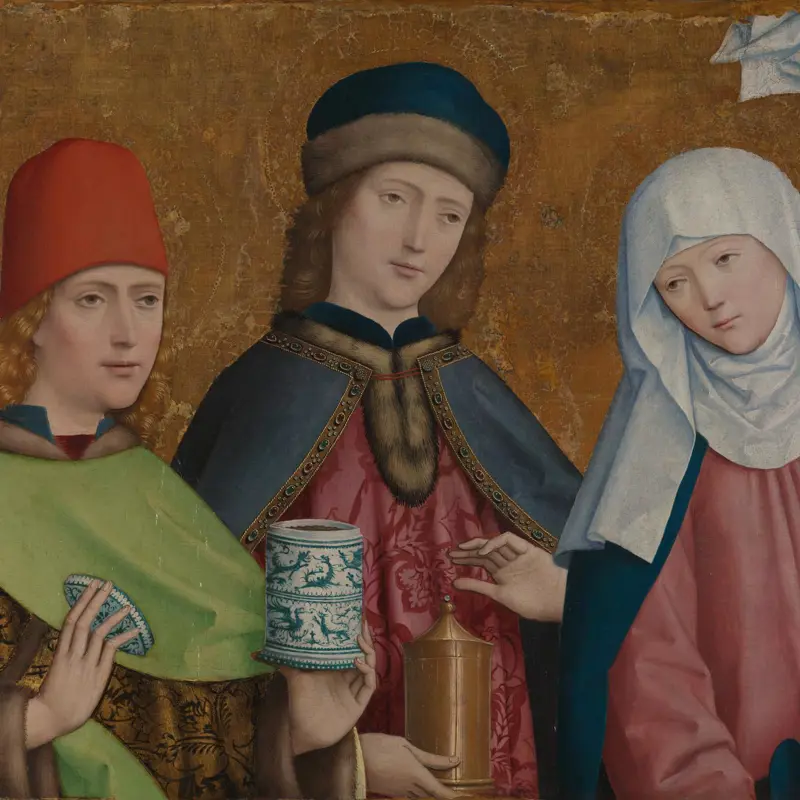Jan Baegert (Master of Cappenberg), 'The Coronation of the Virgin', about 1520
About the work
Overview
This is one of two panels in the National Gallery’s collection that probably once decorated the outer faces of the shutters of an altarpiece made for the high altar of the Benedictine abbey at Liesborn. Here, the Virgin Mary kneels between Christ to the left and God the Father, who place a crown on her head. The Holy Ghost in the form of a dove hovers above her. According to the Golden Legend, a thirteenth-century compilation of the lives of the saints, Mary’s coronation occurred after her glorious ascension to heaven.
This scene, which shows three holy figures and is set in heaven, is one of the most splendid of the whole altarpiece. Each figure has a large gilded halo as well as an elaborate crown. The artist has incised parallel lines into the gold leaf of the crowns to indicate areas of shadow (see, for example, the inner rim of the Virgin’s crown).
Key facts
Details
- Full title
- The Coronation of the Virgin
- Artist dates
- Active about 1500 - about 1525
- Part of the series
- The Liesborn Altarpiece
- Date made
- About 1520
- Medium and support
- Oil on wood (Netherlandish/West German oak, identified)
- Dimensions
- 97.2 × 70.5 cm
- Acquisition credit
- Bought, 1854
- Inventory number
- NG263
- Location
- Not on display
- Collection
- Main Collection
Provenance
Additional information
Text extracted from the ‘Provenance’ section of the catalogue entry in Susan Foister, ‘National Gallery Catalogues: The German Paintings before 1800’, London 2024; for further information, see the full catalogue entry.
Exhibition history
-
2014Strange Beauty: Masters of the German RenaissanceThe National Gallery (London)19 February 2014 - 11 May 2014
Bibliography
-
1959Levey, Michael, National Gallery Catalogues: The German Schools, London 1959
-
2001
C. Baker and T. Henry, The National Gallery: Complete Illustrated Catalogue, London 2001
-
2024S. Foister, National Gallery Catalogues: The German Paintings before 1800, 2 vols, London 2024
About this record
If you know more about this work or have spotted an error, please contact us. Please note that exhibition histories are listed from 2009 onwards. Bibliographies may not be complete; more comprehensive information is available in the National Gallery Library.
Images
About the series: The Liesborn Altarpiece
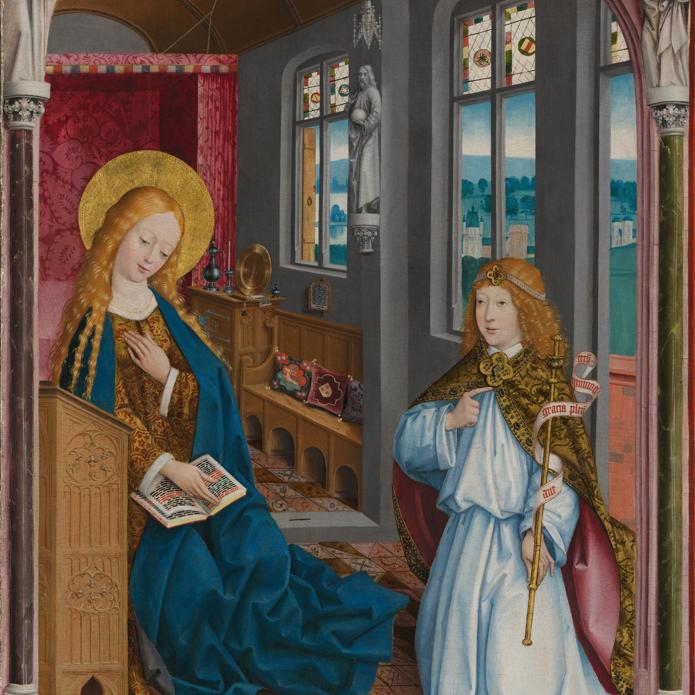
Overview
These images once formed part of a large altarpiece made for the high altar of the monastery church of the Benedictine abbey at Liesborn, in Westphalia in north-west Germany. The main panel consisted of a central scene of the Crucifixion, flanked on either side by two smaller individual scenes from Christ’s infancy.
In 1517 two shutters painted by the Master of Cappenberg were added to either side of the Master of Liesborn’s original panel. These showed the events leading up to Christ’s crucifixion, his resurrection and events that occurred afterwards, such as the Pentecost.
The altarpiece was removed in the eighteenth century and later cut up; only fragments survive. Six images from the main panel are in the National Gallery’s collection: three fragments of the central Crucifixion, two complete flanking images (The Annunciation and The Presentation in the Temple) and a fragment of The Adoration of the Kings, another flanking scene. Two further images come from the shutters.

